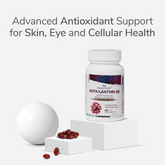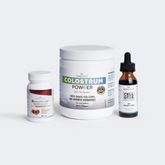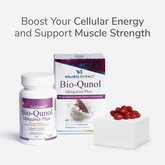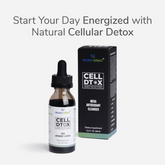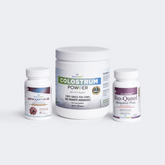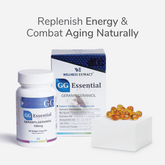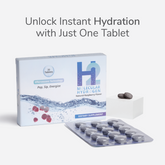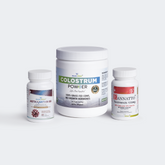Estimated Reading Time: 9 minutes
|Did you know that salmon, shrimp, and lobster are vibrant red-orange due to a powerful antioxidant?
Carotenoids are the natural color makers that give bright colors like yellow, orange, and red to many things in nature. You can find them in foods like carrots, papaya, saffron, and paprika. They're also super helpful for our health! Among the large family of carotenoids, astaxanthin stands out as one of the most powerful. But unlike other carotenoids like beta-carotene or lutein, astaxanthin is unique because of its superior antioxidant properties.
But what exactly is astaxanthin, and why should you consider incorporating astaxanthin-rich foods into your diet? Let's dive in.
What is Astaxanthin?
Astaxanthin is a naturally occurring carotenoid, often called the “king of carotenoids.” It is found in certain plants and animals and is responsible for the pink and red colors of salmon, shrimp, and other seafood.
Why is Astaxanthin Called “King of Carotenoids”?
Astaxanthin is considered the "King of Carotenoids" because it is a superior antioxidant that helps protect cells from damage caused by free radicals and reactive oxygen. It protects cellular membranes and neutralizes free radicals in both water-soluble and fat-soluble areas of the cell membrane.
What are The Astaxanthin Health Benefits?
It plays a crucial role in supporting overall health. Here’s how it helps:
-
Eye health: Astaxanthin is considered one of the most potent antioxidants. It helps protect the eyes from oxidative damage, reduces inflammation, and supports better eye health.
-
Skin health: Astaxanthin offers numerous skin health benefits, supported by various studies. It may help reduce wrinkles and fine lines, protect the skin from UV rays, and improve skin elasticity.
-
Cardiovascular health: Astaxanthin helps improve heart health, such as blood circulation, and reduces oxidative stress.
-
Bone health: Astaxanthin has shown potential in addressing concerns such as bone loss and osteoporosis. It may also help improve age-related osteoporosis and increase the bone mineralization rate.
-
Cognitive health: Astaxanthin's anti-inflammatory properties reduce inflammation and oxidative stress in the brain, both of which are linked to neurodegenerative diseases.
Also read: 6 lesser-known health benefits of astaxanthin.
What foods are high in astaxanthin?
Are you curious about where to find astaxanthin? Stay with us as we explore the best dietary sources of this powerful antioxidant, i.e., astaxanthin.
1. Microalgae (Haematococcus Pluvialis) – The richest natural source, which contains up to 5% of the dry weight of astaxanthin.
Haematococcus pluvialis is a type of green microalgae that thrives in freshwater environments, particularly in ponds and areas with abundant sunlight. As an algae, it is not typically available for direct consumption. However, this microalga is the most potent natural source of astaxanthin, containing up to 5% of its dry weight in astaxanthin.
Due to its high concentration, manufacturers use it in commercial astaxanthin supplements. This microalga produces astaxanthin as a protective mechanism against harsh environmental conditions, such as high UV exposure. It also has a significantly greater antioxidant capacity than the synthetic one. It can dramatically reduce free radicals and oxidative stress and help the human body maintain a healthy state.
2. Wild-Caught Salmon (Sockeye, Coho, King) – Contains up to 26–38 mg/kg of astaxanthin.
Wild-caught salmon, like sockeye, coho, and king (Chinook), get their rich red color from astaxanthin, a powerful antioxidant. Sockeye salmon has the highest amount, with about 26 to 38 milligrams of astaxanthin per kilogram of its meat, making it one of the best natural sources of this nutrient. It is responsible for the deep red color of wild salmon and contributes to its cardiovascular and anti-inflammatory benefits.
3. Krill (Euphausia superba): Rich source of omega-3 fatty acids and astaxanthin
Krill oil, derived from tiny crustaceans called krill, is found in the Antarctic Ocean and is rich in astaxanthin, but it contains much lower amounts compared to microalgae. It is a rich source of omega-3 fatty acids and contains the potent antioxidant astaxanthin.
Studies have shown that krill oil contains approximately 80.55 mg/kg to higher levels of astaxanthin. It helps prevent oxidation and also contributes to its antioxidant and anti-inflammatory benefits, making it a valuable supplement for heart and joint health.
4. Shrimp – Popular seafood with a good astaxanthin content
Shrimp is a popular seafood that owes its reddish-pink color to astaxanthin, a powerful antioxidant. Studies have found that shrimp contain approximately 147.7 mg of astaxanthin, which includes 3.95% free form, 74.29% diester form, and 19.72% monoester form.
Incorporating shrimp into your diet not only provides a delicious meal but also offers the health benefits associated with astaxanthin, such as supporting skin health and reducing inflammation.
5. Snow Crab – Tasty and packed with astaxanthin
Snow crab is a notable source of astaxanthin, a powerful antioxidant. Studies have found that it contains 119.6 mg/kg of astaxanthin. It is present in various forms, including 21.16% free form, 5.11% monoester form, and 56.57% diester form. It provides antioxidant benefits and potentially supports overall health.
6. Crawfish – Small but powerful source of astaxanthin
Crawfish is a small crustacean often used in Southern cuisine. It is a small but rich source of astaxanthin that contains a higher content of astaxanthin, about 153 mg per kilogram of weight. It is present in various forms: about 40.3% as free astaxanthin and 49.4% as esterified forms.
7. Red Yeast (Phaffia rhodozyma) – Astaxanthin concentrations ranging from 100 to 300 parts per million (ppm)
Red yeast, also known as Phaffia rhodozyma and Xanthophyllomyces dendrorhous, is a natural source of astaxanthin, a powerful antioxidant. It contains astaxanthin concentrations ranging from 100 to 300 parts per million (ppm) of the yeast's dry mass.
It may help improve muscle pigmentation and reduce oxidative stress markers, such as serum transaminase activities and lipid peroxide levels.
8. Rainbow Trout: 12-25 mg/kg flesh astaxanthin
Rainbow trout, also known as Oncorhynchus mykiss, is a good source of astaxanthin. It is pink in color because of the presence of this antioxidant. It supports the digestion and absorption of nutrients and contributes to better growth performance.
9. Egg Yolks (from chickens fed astaxanthin-rich diets) – Can be enhanced with astaxanthin.
Eggs are an alternative method of supplementing the diet. They provide the antioxidative properties of astaxanthin, improved nutrition, and enhanced quality (yolk strength, yolk coloration, and nutrient composition).
A study found that astaxanthin in eggs can provide human health benefits, such as supporting eye health, reducing inflammation, and acting as a powerful antioxidant.
10. Lobster: Offers both protein and antioxidants
Lobsters are marine crustaceans that offer around 0.5 to 1 mcg of astaxanthin per gram, adding to their nutritional profile. Richard Kuhn, an Austrian-German biochemist, identified astaxanthin from lobsters in 1938.
Lobsters are a notable source of astaxanthin, a pigment responsible for their coloration. In their natural state, lobsters appear bluish due to the binding of astaxanthin to the protein crustacyanin. Consuming lobsters offers potential health benefits.
11. Arctic Char – Similar to salmon with good astaxanthin content ranging from 0 to 192 mg/kg
Arctic char, also known as Salvelinus alpinus, is a cold-water fish known for its pink to reddish flesh—a coloration primarily attributed to astaxanthin, a potent antioxidant carotenoid. Studies have shown that dietary supplementation enhances the astaxanthin content in Arctic char.

Why Is Haematococcus Pluvialis the Best Source?
Although astaxanthin occurs commonly in nature, especially in fish and crustaceans that contain it, these sources provide significantly lower concentrations than Haematococcus pluvialis. For this reason, manufacturers derive the highest quality astaxanthin supplements from this microalga rather than from seafood.
Since producers cultivate astaxanthin from microalgae in a controlled environment, they keep it free from marine contaminants like heavy metals. This source also delivers the most concentrated natural astaxanthin, ranging from 10,000–40,000 ppm (mg/kg), compared to other carotenoids such as beta-carotene, lutein, and canthaxanthin.
Unlocking Astaxanthin: More Than Just a Dietary Source
-
Supplements: Astaxanthin supplements are a convenient way to boost your antioxidant levels, support overall health, and fill any dietary gaps. Just take astaxanthin capsules with water, following the directions on the label. When choosing an astaxanthin supplement, look for high-quality, GRASS-approved, and free from additives and contaminants.
-
Dosage: A study found that humans safely tolerate natural astaxanthin supplements, even at a dosage of up to 24 mg per day, with no adverse effects reported. Researchers confirmed that these supplements are safe and well-tolerated. Experts also recommend taking astaxanthin with meals that contain healthy fats.
Conclusion:
In the world of healthcare, astaxanthin has gained popularity for its potent antioxidant qualities and wide range of health benefits—from supporting skin health and reducing inflammation to promoting heart, brain, and bone health.
From supporting skin health and reducing inflammation to promoting heart, brain, and bone health. Although it is present in a variety of seafood, Haematococcus pluvialis stands out as the richest natural source of this potent carotenoid.
Astaxanthin-rich foods are a great way to get this powerful antioxidant along with other essential nutrients. But depending only on food sources isn’t always practical. To ensure you’re getting enough, you can add astaxanthin supplements to your routine. They provide a convenient way to boost your antioxidant levels, support overall health, and fill any dietary gaps.
Disclaimer: These statements have not been assessed by the FDA. The information contained within this page is for educational purposes only. It is not intended to replace the advice or attention of health care professionals.
Frequently Asked Questions (FAQs)
Q1. Who cannot take astaxanthin?
Astaxanthin is a powerful antioxidant, but specific individuals should avoid its use. Pregnant or breastfeeding women and those with seafood allergies, hypercalcemia, or low blood pressure should consult a healthcare provider before use. Always check with a doctor if you have any concerns.
Q2. Which food has the highest astaxanthin?
The highest natural source of astaxanthin is Haematococcus pluvialis, a type of microalgae packed with this powerful antioxidant.
Q3. Which fruit contains astaxanthin?
A few fruits, like red-pigmented berries (such as goji berries), contain small amounts of astaxanthin, but they are not nearly as rich as seafood or algae sources.
Q4. What is the richest source of astaxanthin?
The richest source of astaxanthin is Haematococcus pluvialis, a freshwater microalgae with the highest concentration of this potent antioxidant, far more than any seafood.
Q5. Do eggs have astaxanthin?
Yes, Egg yolks can contain astaxanthin, especially when hens are fed astaxanthin-rich diets, which enhances the yolk's color and provides antioxidant benefits.
Q6. Can you eat astaxanthin every day?
Yes, astaxanthin is safe for daily consumption and offers numerous health benefits, including skin protection, eye health, and anti-inflammatory support.
References:
-
R. R. Tanaka, S. Sugita, and T. Yamashita, "Analysis of carotenoids in marine organisms by HPLC," J Agric Food Chem, vol. 29, no. 3, pp. 545–548, May 1981. [Online]. Available: https://pubs.acs.org/doi/abs/10.1021/jf00008a032
-
H. Britton, "Carotenoid analysis: methods and protocols," Methods in Enzymology, vol. 214, pp. 3–17, Jan. 1993. [Online]. Available: https://pubs.acs.org/doi/abs/10.1021/jf00008a032
-
H. Ren, Z. Hu, and Y. Liu, "Astaxanthin: Advances in Biosynthesis and Applications," Mar Drugs, vol. 22, no. 2, Feb. 2024, doi: 10.3390/md22020128. [Online]. Available: https://pubmed.ncbi.nlm.nih.gov/38171728/
-
S. Lorenz and T. T. Sørensen, "Astaxanthin and pigmentation of Atlantic salmon," Aquaculture Research, vol. 28, no. 5, pp. 331–340, May 1997, doi: 10.1046/j.1365-2109.1997.00828.x. [Online]. Available: https://sci-hub.se/10.1046/j.1365-2109.1997.00828.x






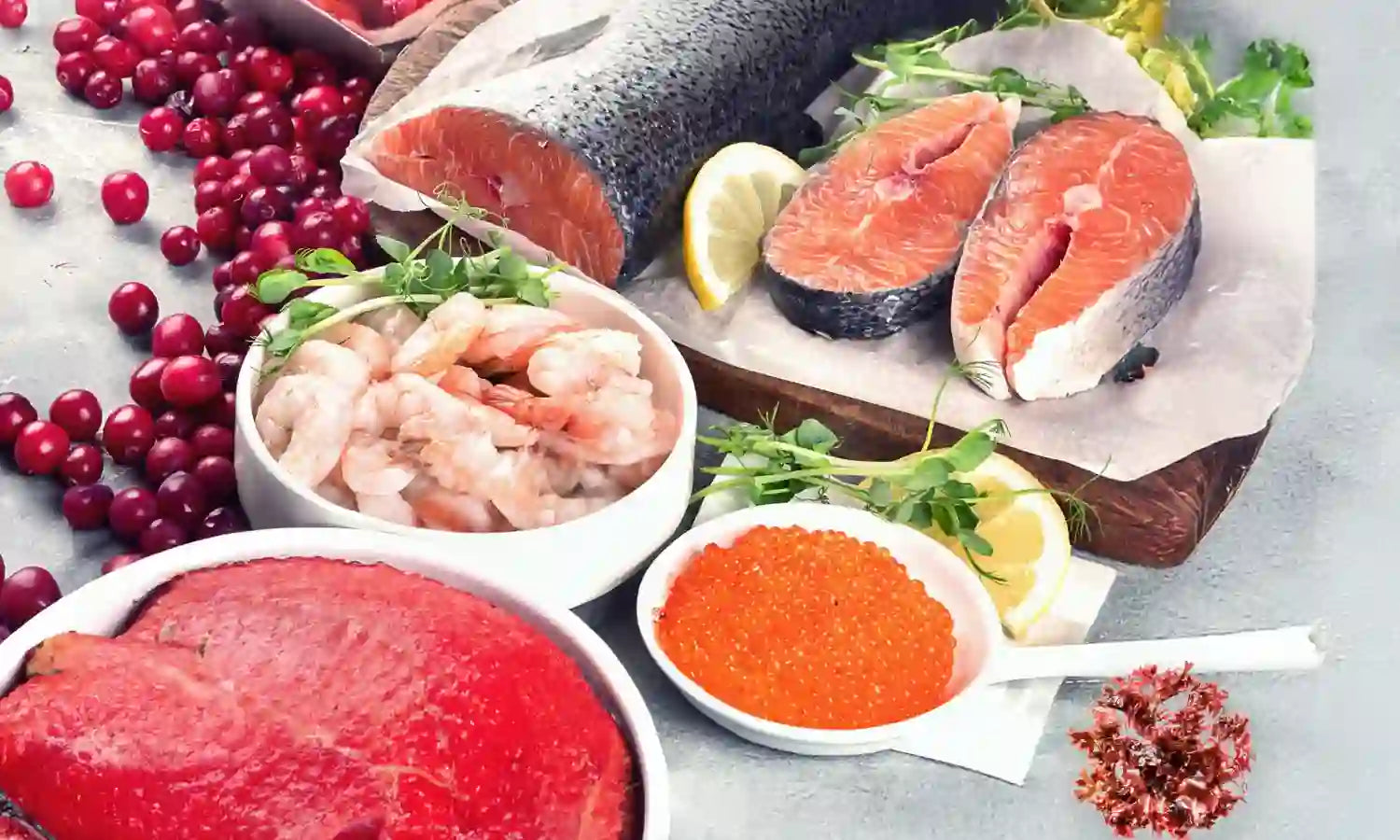







![Top 5 Best Vitamins for Men in Their 30s [Backed by Science!]](http://wellnessextract.com/cdn/shop/articles/Vitamin_for_men_8fe0fe21-19b1-4020-b895-dc104449637e_165x.webp?v=1765878148)




